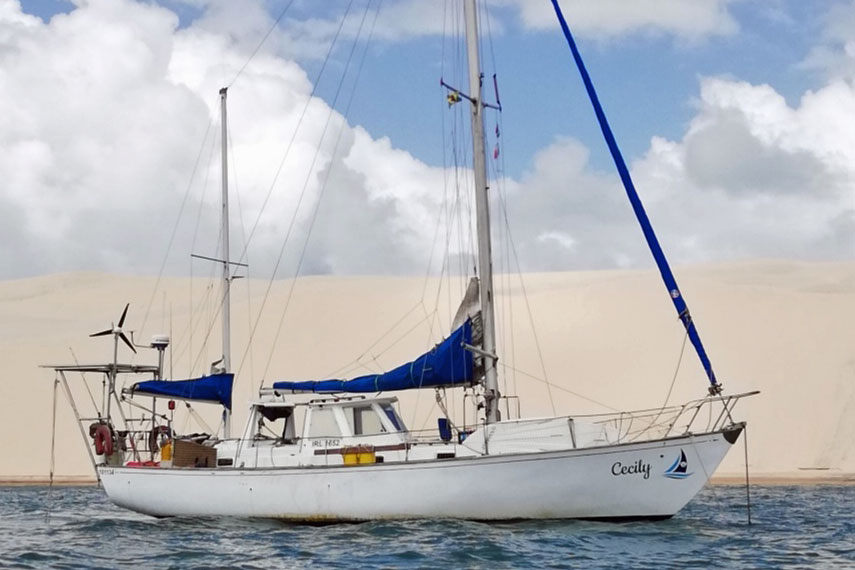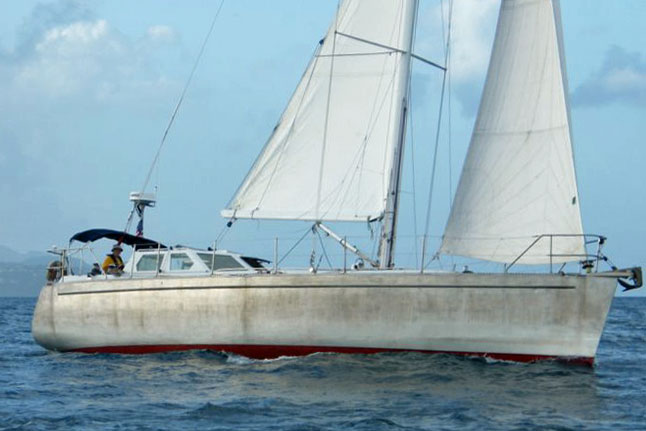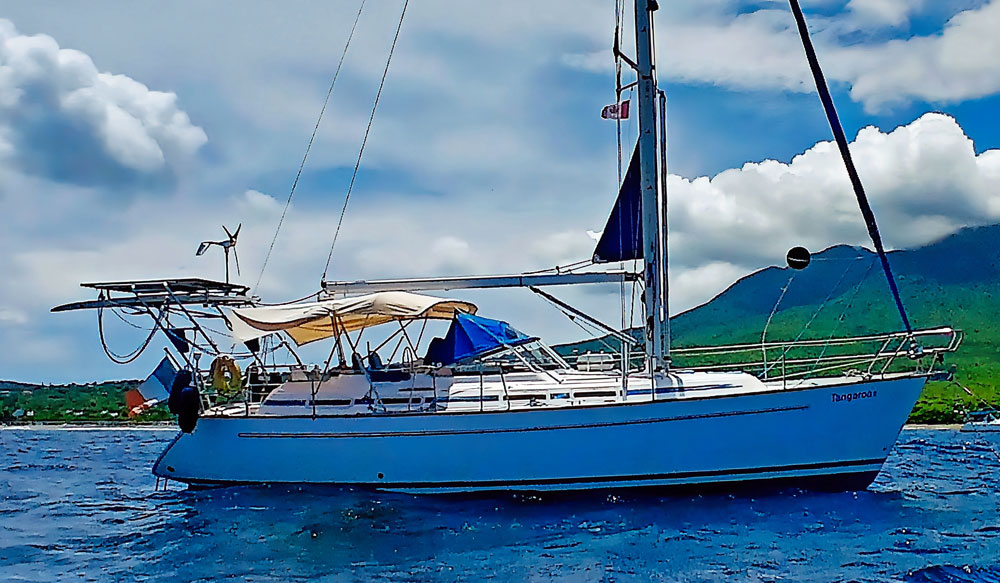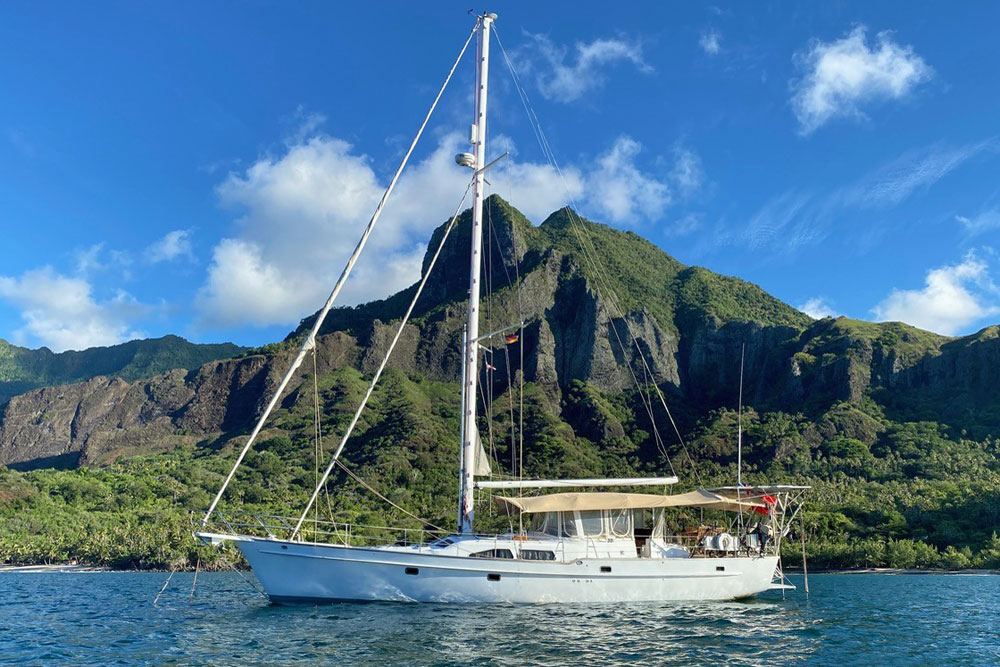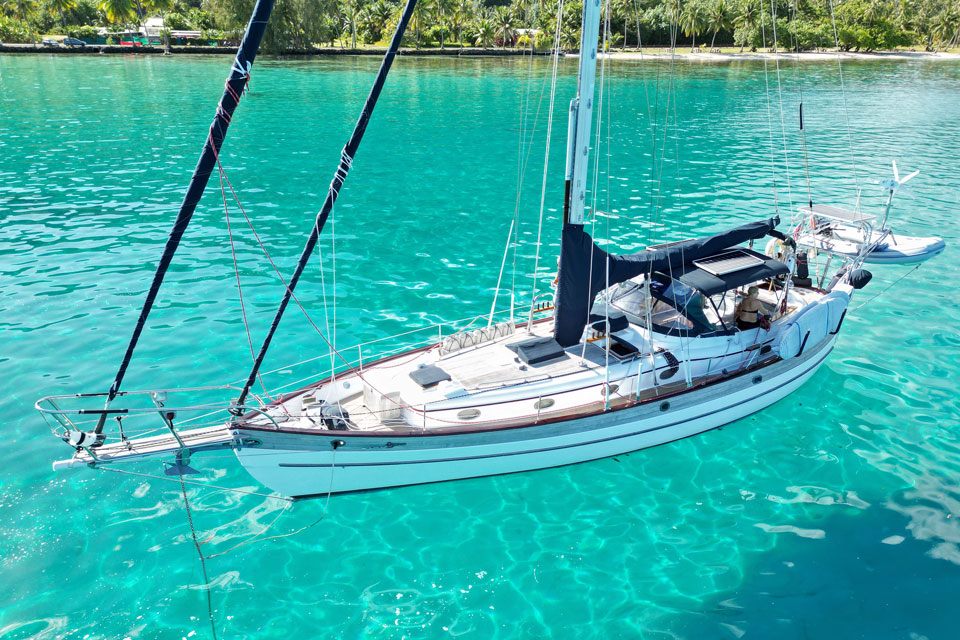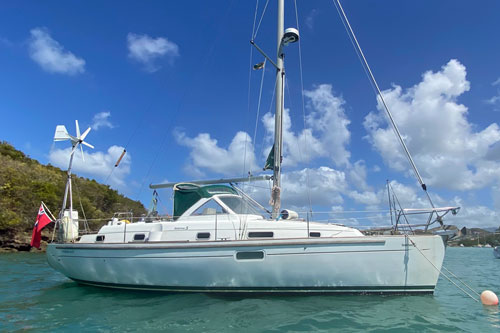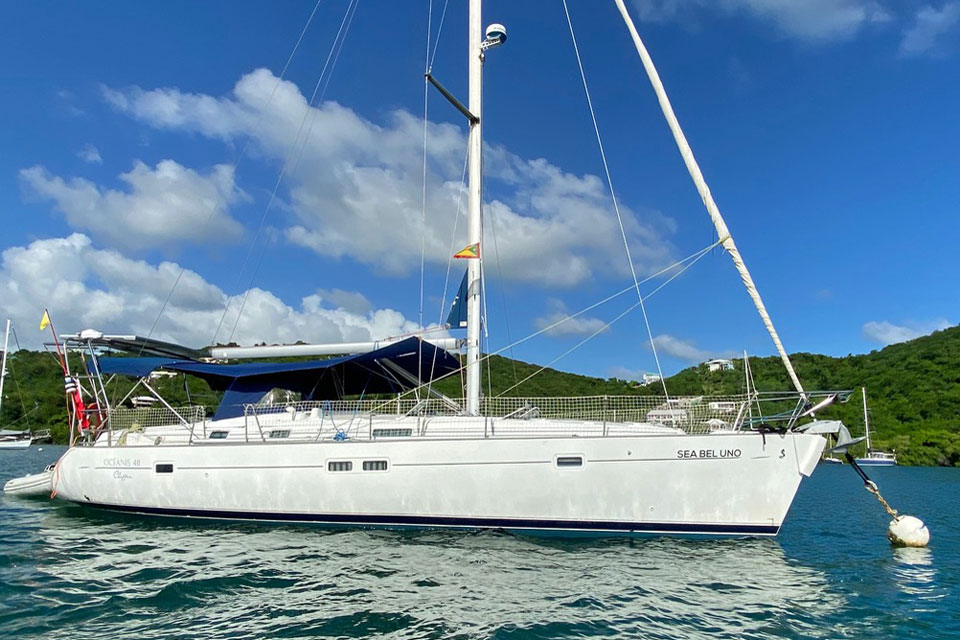- Home
- Sailboat Liveaboard
How We Planned For Our Sailboat Liveaboard Lifestyle
Before we made the break and adopted a sailboat liveaboard lifestyle we lived in a small house on the Devonshire bank of the River Tamar in England. We both held well-paid local jobs, owned a car that worked most of the time and kept our sailboat Alacazam on a deep-water mooring in front of the lounge window.
The Royal Albert Bridge Inn (our local pub) was well within staggering distance, and the Tamar River Sailing Club was just over the road. A not too depressing status quo.
But we both had long agreed that wall-to-wall working no longer represented a sensible utilisation of the rest of our lives, unless:
- we really enjoyed it - which we didn't,
- or had no other choice - which we did.
Long distance cruising was to be our new lifestyle we had decided, and having spent the previous five years building a suitable boat to do it in, it now seemed reasonable to get on with it.
The kids had flown the nest, the cats had departed this life and the boat was paid for. The green light glowed enticingly.
Even so I had lingering doubts about the whole sailboat liveaboard endeavour; it was Mary's resolute approach to it all that made it happen. Had it been left to me, we would still have been spinning the same treadmill with plans to do it "next year".
Perhaps I wasn't the risk taker I thought I was, being subconsciously reluctant to voluntarily cut-off the income stream or otherwise interfere with the cosy status quo. I knew the period of indecision was over when my boss called to tell me that Mary had handed my notice in.
We thought long and hard about selling the house and investing the proceeds. Finally we decided that it would be prudent to hang on to it in the medium term, preferring the hassle of letting the property to finding ourselves out of the UK property market if our new lifestyle was curtailed for any reason.
The Mediterranean was given the thumbs down by Mary, who reasoned that:~
- we'd been there before, and
- if we were going to cross an ocean we ought to do it before we got too old.
The availability of a whole portfolio of secondhand, but recent Caribbean charts purchased from Marine Bazaar (Sutton Harbour, Plymouth) for a very reasonable sum settled it.
Now we are back in the UK, boring both family and friends alike with tales of our exploits and revitalising the somewhat anorexic cruising fund. Meanwhile, Alacazam is sitting out the oppressively hot and humid hurricane season ashore in Trinidad awaiting our return in late November.
But how did we allay those pre-departure concerns?
Buoyed up by the prospect of a carefree sailboat liveaboard life in the sun, we had not considered objectively the downside that could be associated with such a lifestyle and it was clearly that aspect that was bothering me.
Our familiarity with project management techniques prompted us to look at the decision through a 'SWOT' (Strengths, Weaknesses, Opportunities and Threats) Analysis. Whilst the strengths and opportunities were clearly apparent, it was the weaknesses and threats that now needed to be identified and rationalised.
The resulting list evolved into a risk register of those events that would affect our expectation in a negative manner. Initially the list was depressingly long until we realised that we were considering sailing risks (hull damage, rig failure, foul weather etc) rather than those that would fundamentally affect our sailboat liveaboard lifestyle.
This was it, in no particular order, together with our probability and impact assessment:
Table 1 ~ Probability and Impact Assessment
| Risk Event | Probability of Occurrence | Impact on Lifestyle | ||||
|---|---|---|---|---|---|---|
| High | Med | Low | High | Med | Low | |
| Incapacitating injury or illness | ✔ | ✔ | ||||
| One, or both of us, would find the insecurity of being away from the working environment untenable | ✔ | ✔ | ||||
| Total loss of the boat | ✔ | ✔ | ||||
| Bad tenant would damage home, or not pay rent | ✔ | ✔ | ||||
| Out-of-pocket expense budget would be exceeded | ✔ | ✔ | ||||
| Boat would prove to be unsuitable for long distance sailing | ✔ | ✔ | ||||
| Family issue at home would require return to UK | ✔ | ✔ | ||||
| Personal relationship would not stand up to prolonged period of living in close proximity to each other | ✔ | ✔ | ||||
| Initially rewarding lifestyle would pall, and become mundane and boring | ✔ | ✔ | ||||
In the above table, the assessment criteria of high, medium and low, in each case means:~
| High | Medium | Low | |
|---|---|---|---|
| Probability of Occurrence | Almost a certainty | More likely than not | Unlikely |
| Impact on Lifestyle | Would curtail it | Problematical | Tolerable |
This enables each risk to be categorised as to its overall severity, combining probability and impact, as set out in Table 2, where:
- a Category 1 Risk (High Probability/ High Impact) represents an unacceptable risk, ie the 'show-stopper', and
- a Category 6 Risk (Low Probability/Low Impact) represents an inconsequential risk which could be ignored.
Table 2 ~ Risk Categorisation
| Probability of Occurrence | Impact on Lifestyle | |
|---|---|---|
| Category 1 Risk | High | High |
| Category 2 Risk | High | Medium |
| Category 4 Risk | High | Low |
| Category 2 Risk | Medium | High |
| Category 3 Risk | Medium | Medium |
| Category 5 Risk | Medium | Low |
| Category 4 Risk | Low | High |
| Category 5 Risk | Low | Medium |
| Category 6 Risk | Low | Low |
The risks listed in Table 1 when allocated to the appropriate category set out in Table 2, showed the following:
Table 3 ~ Risk Analysis
| Category 1 Risk | No risks fell within this category |
| Category 2 Risk | Initially rewarding lifestyle would pall, and become mundane and boring |
| Category 3 Risk | Out-of-pocket expense budget would be exceeded |
| Category 4 Risk | Incapacitating injury or illness |
|---|---|
| Personal relationship would not stand up to prolonged period of living in close proximity to each other | |
| Boat would prove to be unsuitable for long distance sailing | |
| Total loss of the boat | |
| Category 5 Risk | Bad tenant would damage home, or not pay rent |
| Family issue at home would require return to UK | |
| One, or both of us, would find the insecurity of being away from the working environment untenable | |
| Category 6 Risk | No risks fell within this category |
We examined each risk in turn, considering what if anything could be done to reduce its probability of occurrence and to mitigate the impact if it happened. For instance:~
a. Initially rewarding sailboat liveaboard lifestyle would pall, and become mundane and boring
- Perhaps predictably, this most serious risk of all is the one that we couldn't do much about in advance. But forewarned is forearmed.
b. Out-of-pocket expense budget would be exceeded
- Set up contingency fund.
- Be prepared to seek employment
c. Incapacitating injury or illness
- Seek advice from MASTA (Medical Advisory Service for Travellers Abroad), and have appropriate inoculations and injections.
- Seek the advice of your GP, and carry a medical kit as advised.
- Use insect repellents.
- Get health, sickness and personal accident insurance.
d. Personal relationship would not stand up to prolonged period of living in close proximity to each other
- Sail together on number of longish cruises before setting off on the big one.
e. Boat would prove to be unsuitable for long distance cruising
- As d above, and modify the vessel accordingly
f. Total loss of the boat
- Make regular inspection of boat and deal promptly with components showing signs of wear and repair;
- Use weather websites to get the best available information prior to departure on a major passage. These now seem to be accurate for about four days ahead, diminishly so after that;
- Lock the boat securely when not aboard;
- Insure with reputable marine insurance company.
g. Bad tenant would damage home, or not pay rent.
- Use professional letting agent, selected with care
h. Family issue at home would require return to UK
- Budget for trips home at regular intervals, say two per year.
i. One, or both of us, would find the insecurity of being away from the working environment untenable.
- Be prepared to mix sailing with some form of work;
- Keep network of employment contacts alive.
This risk analysis approach is a commonly used project management tool, and may seem a little heavy-handed for this particular application.
However it helped us to convince ourselves that we had properly considered this major change to our lives, and enabled the 'go' button to be firmly pressed with increased confidence.
Second-hand Cruising Boats for Sale...
Just click on the images below to see the full details of these cruising boats that are advertised by their owners (not through a broker or other 3rd party) right here on sailboat-cruising.com...
Latest Sailboats Offered for Sale by their Owners...
Recent Articles
-
Dufour 425 Grand Large Review: Specs, Ratios & Performance Analysis
Jan 20, 26 03:44 PM
An in-depth expert review of the Dufour 425 sailboat. Explore technical specifications, design ratios, twin-wheel benefits, and practical cruising performance for this Category A cruiser. -
A Pacific Seacraft Crealock 37 for Sale
Jan 20, 26 06:59 AM
'Hero', my Pacific Seacraft Crealock 37 is perfect for a liveaboard couple, and can accommodate 5-6 for overnights. She is a very stable and reliable vessel with classic good looks. -
Beneteau Idylle 44 Review: Comprehensive Specs & Performance Analysis
Jan 19, 26 09:45 AM
An in-depth review of the Beneteau Idylle 44 (13.50). Explore the Jean Berret design, solid GRP construction, performance ratios, and why this 1980s cruiser remains a top choice for bluewater sailors.

